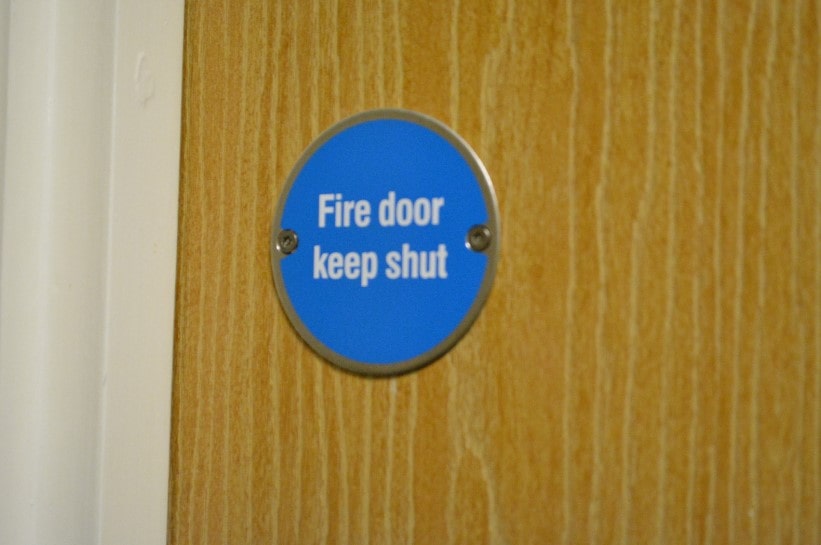
How Often Should Your Fire Door Be Inspected?
Fire doors are an integral part of a building’s passive fire protection infrastructure and are designed to prevent and inhibit the spread of smoke and fire around a building. Fire door inspections, therefore, form a critical aspect of building safety.
Thorough inspections not only protect lives but also safeguard property and assets. In this article, we’ll look at the legislation and legal obligations surrounding fire door inspections, and the practical steps you can take to keep your doors in good condition.
Why Do Fire Doors Need Inspections?
Fire doors approved for use in the UK are sturdy and reliable assets, and are tested to provide a reliable level of fire protection in terms of minutes, e.g. FD 30, FD 120 etc. However, all fire doors consist of a mechanical assembly with a fire-resistant door leaf fitted into a frame, along with supporting hardware such as hinges, locks, handles, and closes. These components are subject to wear and tear and should therefore be inspected and maintained at regular intervals to ensure optimal performance when needed.
A fire door inspection will also verify the strategic value of fire doors, ensuring they are positioned correctly throughout buildings, thus dividing them into compartments that safely contain smoke and fire. This strategic placement allows occupants more time for a safe evacuation, while facilitating the work of fire services and reducing the level of damage to property in the event of a fire.
Legal And Regulatory Requirements For Fire Door Maintenance
The responsible person in charge of a building, such as the building owner, facility manager, or a designated third party, has a legal obligation to ensure that fire doors within the premises are appropriately maintained and inspected, and the guidelines for multi-occupancy residential buildings are especially stringent. In the UK, fire safety legislation and guidance such as The Regulatory Reform (Fire Safety) Order 2005 (FSO), and the British Standard BS 9999 emphasise the importance of inspecting and servicing fire doors to ensure optimal functioning.
The Fire Safety Order is the UK’s primary item of fire safety legislation for workplaces and non-domestic premises, and regarding fire door inspections, the law states that fire doors must be “subject to a suitable system of maintenance, be maintained in an efficient state, in efficient working order, and in good repair” (Article 17). This implies that regular passive fire inspections and maintenance of all fire doors are required to ensure that they are functioning properly and can effectively prevent the spread of fire, and that fire doors should be replaced or repaired if they are not in good condition.
The FSO is regulated and enforced by local fire and rescue authorities, who are empowered to carry out inspections at any time to check that the responsible person is meeting the requirements of the Order. If the regulator identifies an issue, they can take legal enforcement action, ranging from providing informal advice to prosecuting the responsible person.
BS 9999 also recommends that fire doors are inspected at least every 12 months, with more frequent assessments in high traffic settings such as hospitals or schools. The frequency required for your premises will ultimately depend on the level of use your fire doors get, and the fire risk level of your building.
Since January 2023, fire doors in common parts of multi-occupied residential buildings in England are now subject to checks every quarter in line with the Fire Safety (England) Regulations 2022. This applies to all residential buildings with storeys over 11 m in height, and also specifies annual checks on the entrance doors to all individual residences and entrances to common areas, including a thorough inspection of self-closing devices.
Common Fire Door Maintenance Issues
Regular fire door inspections will identify early-stage failure and degradation for various important components, which are at risk from damage and wear and tear from repeated use. These include:
- Gaps between the frame and door leaf
- Non-functioning or damaged door seals
- Worn and damaged hinges
- Faulty door closing mechanisms
- Compromised fire door leaf integrity
Next Steps
For more information about fire door inspections and how they can help improve building safety and extend the working efficiency of your fire protection assets, please call IFI Group today on 01522 904189.
Image Source: Canva
